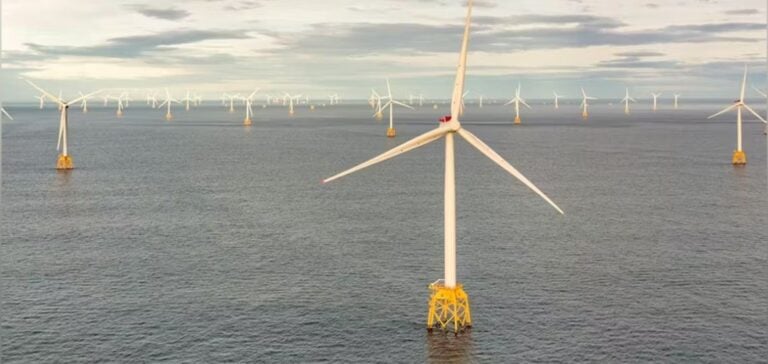The 300 MW Zhong Neng offshore wind farm is being completed by Copenhagen Infrastructure Partners (CIP) in partnership with China Steel Corporation (CSC) off Changhua County, Taiwan.
The project stands out as the first of its kind in the country to be completed ahead of schedule.
The first turbines were installed in May 2024, and full connection to the power grid is scheduled by the end of the year. Zhong Neng meets the most stringent local content requirements imposed to date by Taiwan’s offshore wind industry.
The investment in this project is part of CIP‘s wider strategy to strengthen its position in the Taiwanese offshore wind energy market.
The wind farm is the second project of this type delivered by CIP this year, following the 600 MW Changfang-Xidao.
These projects demonstrate CIP’s ability to operate in complex environments while respecting high local standards.
Deployment Strategy and Local Partnerships
The Zhong Neng project was developed by Copenhagen Offshore Partners, CIP’s development partner, with the support of Copenhagen Infrastructure Service Company, CIP’s service provider.
The cooperation is based on a local content plan approved by the Taiwanese authorities as early as 2019.
The involvement of the local supply chain was a key factor in the early completion of this project, which will supply electricity to around 300,000 households once fully operational.
CIP, since entering the Taiwanese market in 2017, has focused its efforts on integrating local players into its projects to ensure efficient implementation in line with regulatory requirements.
The collaboration with CSC reflects this approach to maximizing local economic and industrial impact.
Prospects and challenges in the Taiwanese market
With a combined capacity of 1,400 MW across three projects – Changfang-Xidao (600 MW), Zhong Neng (300 MW) and Fengmiao (500 MW) – CIP is consolidating its position in the Taiwanese offshore wind energy market.
The development of these energy infrastructures meets the growing demand for renewable energy in the region, and is in line with Taiwan’s energy policy, which aims to diversify its production sources.
However, integrating new renewable capacity into Taiwan’s power grid presents technical and logistical challenges.
A robust grid infrastructure is needed to support the rapid increase in wind power generation.
CIP, together with its partners, will have to navigate these complexities to optimize the efficiency of its projects while maintaining economic competitiveness.
Regulatory Challenges and Expansion Opportunities
Taiwan’s ongoing commitment to the development of offshore wind power is opening up new opportunities for market players.
Local content regulations and government incentives encourage companies to invest in projects aligned with national priorities.
CIP, building on its experience in Taiwan, could extend its investment model to other markets in Asia-Pacific, where similar energy transition initiatives are taking shape.
By maintaining a balance between local requirements and global ambitions, CIP and its partners are contributing not only to Taiwan’s energy diversification, but also to the maturation of a regional offshore wind market, likely to attract other investors in the long term.






















